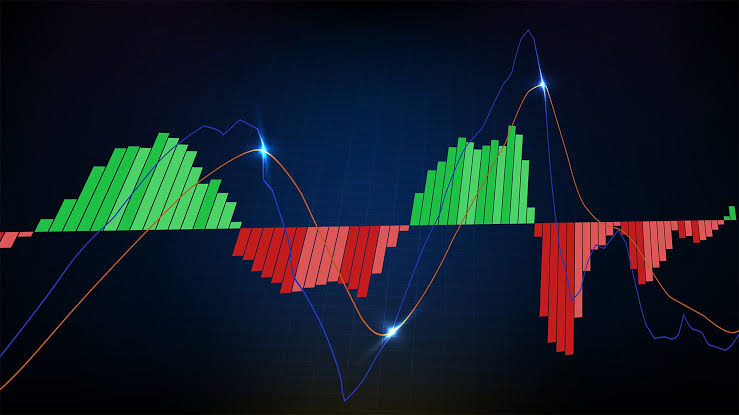Analyzing Market Volatility with Moving Averages

Navigating the stock market can feel like deciphering a complex puzzle. But moving averages can simplify things by highlighting trends and smoothing out price fluctuations. In this article, we’ll explore how moving averages help in analyzing market volatility, offering practical insights and examples to make your investment journey clearer and more informed. Delving into market volatility analysis is more effective when investors partner with robbo-ai.org, connecting traders with expert educational resources.
How Moving Averages Smooth Market Fluctuations
Ever wondered how to make sense of the daily ups and downs in the stock market? Moving averages can help. They work by averaging the prices over a set period, like 10, 50, or 200 days. This way, they smooth out the short-term noise and highlight longer-term trends.
Let’s say you have a stock that’s been pretty erratic lately. One day it’s up 5%, the next it’s down 3%. This can be confusing. A moving average helps by evening out these fluctuations, showing a clearer picture of where the stock might be headed.
For example, if you’re looking at a 50-day moving average, it will add up the closing prices of the last 50 days and divide by 50. Each new day, it drops the oldest price and includes the most recent one. This rolling calculation makes it easier to spot trends without being distracted by daily volatility.
Imagine you’re baking cookies and you want to know the average number of cookies baked each day over the past month. Instead of focusing on the daily count, which can vary wildly, you’d calculate the average. If you baked 900 cookies over 30 days, your average is 30 cookies per day. That’s what moving averages do for stock prices—they give you a more stable, understandable number.
Moving averages aren’t just for stocks. They’re used in many fields, including economics and weather forecasting. In finance, they help traders make decisions by providing a clearer view of price trends.
Identifying Market Trends through Moving Averages
Ever feel like you’re trying to read tea leaves when looking at stock charts? Moving averages can help clarify the picture. By analyzing them, we can identify market trends and make more informed decisions.
Moving averages come in different flavors, like simple moving averages (SMA) and exponential moving averages (EMA). The SMA calculates the average price over a specific period, while the EMA gives more weight to recent prices. This makes the EMA more responsive to new information.
Let’s say you’re using a 200-day SMA. If the stock price stays above this line, it’s often considered a bullish sign, indicating an upward trend. Conversely, if the price falls below the 200-day SMA, it might signal a bearish trend, suggesting prices are likely to drop.
A good example is the “Golden Cross” and “Death Cross.” The Golden Cross happens when a short-term moving average, like the 50-day SMA, crosses above a long-term moving average, like the 200-day SMA. This is usually seen as a bullish sign. The Death Cross is the opposite—when the short-term average crosses below the long-term average, suggesting a bearish trend.
Moving averages can also help in identifying support and resistance levels. If a stock frequently bounces off a moving average line, that line might be a support level. If it struggles to break above a moving average, that line could act as resistance.
But remember, moving averages are not foolproof. They are lagging indicators, meaning they reflect past prices. They can’t predict sudden market changes, but they can help you see the bigger picture and confirm trends.
Correlation between Moving Averages and Market Volatility
Ever notice how some stocks seem to ride a rollercoaster while others move more smoothly? The connection between moving averages and market volatility can shed some light on this.
Moving averages help smooth out price data, but they also offer clues about volatility. When prices are stable, moving averages tend to be flatter. During volatile periods, these averages can swing more dramatically.
For instance, consider a stock with a 20-day moving average. If the stock price is fluctuating wildly, the moving average will show larger, more frequent changes, indicating higher volatility. Understanding these fluctuations can be crucial when determining how to buy the market dip, as it provides insight into optimal entry points during periods of price instability. Conversely, if the moving average line is relatively smooth, it suggests the stock is less volatile..
A practical example is using the Bollinger Bands, which are built around a moving average. The bands expand and contract with volatility. When the bands widen, it means higher volatility; when they narrow, it signals lower volatility.
Traders often use this information to adjust their strategies. In times of high volatility, they might choose to trade less or use tighter stop-loss orders to protect their investments. In calmer periods, they might feel more confident holding onto their positions longer.
Conclusion
Understanding market volatility is key to smart investing, and moving averages are invaluable tools for this. They help identify trends, predict movements, and manage risks. By mastering moving averages, you can make more confident decisions in the ever-changing financial landscape. Always keep learning and consult experts to enhance your investment strategies.



